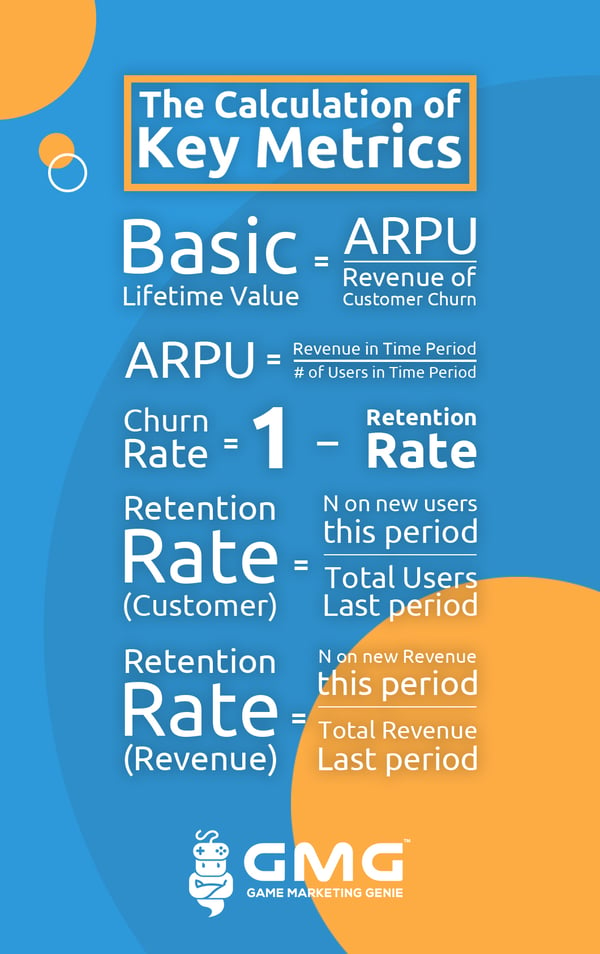How to Measure Your True Mobile Game Revenue Performance
by Game Marketing Genie, on 18-Aug-2020 16:42:25
After creating an amazing mobile game, the next thing you need to do is measure its performance. This comes after the app has been released to the world, and there is some uptake among players. Even if your target audience responds well, you still need to assess the performance of your game, but how are you going to do that if you are not tracking data?
Analytics is an essential part of every good marketing strategy. Other than helping you understand the performance of your game, tracking user data will help you improve the user experience to create an app that will ultimately bring you more revenue.
You need to look at more than just the revenue itself to judge how well your game is performing
When determining the performance of your game, the revenue generated shouldn’t be the only metric you look at. This limited approach will not reveal the real performance of your app, and that is why you need to widen your focus to help you capture the true position of your game. Data analysis is your tool to ensuring that your marketing campaigns are performing as expected.
Want to learn more about how you can improve your campaigns' performance? Get all the tips you need to know here: How to Improve Your Game Marketing ROI with Big Data Analytics.
Say you have a freemium game that generates $200 in user purchases in one day. The next day it generates $250, which seems great, right? But if your user base has quadrupled in one day as well, this isn’t good news.
To track the performance of your app effectively, you need to start by determining your KPIs. You need to state what good performance means to you and find ways to measure these indicators. There are five categories of KPIs you can use to track app success, and they include:
General app KPIs
Most developers can track these general KPIs with ease. Some of the critical indicators in this category include downloads, upgrades, and subscriptions. Downloads show how popular an app is, thus making it the most obvious measure of success for developers.
Some apps come with basic and premium versions, and the upgrades KPI will help you determine how many people use the premium version of the app, how long it takes users to make the upgrade, and what percentage of your user base is on the premium version.
User engagement KPIs
These KPIs answer questions such as where, when, and how users engage with your product. They capture important details such as the app retention rates, the daily active users for your app, and the average time players spend playing your game.
UX KPIs
UX KPIs show how players feel when interacting with your game. Tracking and measuring the user experience will help you identify the areas that need improvement. One of the important metrics in this regard is the load time. It’s frustrating for players when they have to wait for an app to load.
You should also track what devices and operating systems players are accessing your game from for better optimization.

Mobile app marketing KPIs
There are many mobile game app marketing channels for developers. Measuring how effective the channels are will help you determine the best avenues to focus on to get more downloads. Other than the installation sources, you should also track the user demographics to understand your target users.
Revenue KPIs
You created your game to make money, and as such, you need to measure how the application is generating revenue. KPIs in this category will help you know the average revenue per user, the cost of acquiring customers, and the lifetime value of a customer.
CLTV is key
The difference between games that generate millions of dollars and those that don’t can often be narrowed down to a single issue: how well their developers and marketing teams understand the value of a customer.
Customer lifetime value (CLTV) is one of the most powerful metrics in a publisher’s toolbox. The most basic definition of CLTV is the total of all revenues collected from one user, minus the cost of providing your game to the user. It factors the game app marketing costs to determine the profit you’ll make from a customer from the first moment they play your game until the last. You need to look at this as well as revenue when measuring the performance of your game.
CLTV serves many purposes. For most publishers, it is the main metric they use to allocate marketing budgets. Since this figure shows how much a new customer is worth, developers know how much to pay to acquire that customer. For example, if the worth of a specific user type is calculated as $3, in theory, a similar user could profitably be acquired at $2.90.
Once the CLTV is calculated, developers can focus on how it can be optimized. This involves understanding the reasons why players churn and finding ways to make them spend more on your game. The CLTV of different user groups can also be compared to determine which audience group is cost-effective.
The CLTV also comes in handy when you are pursuing potential partners. Investors will be interested in your game’s LTV as a measure of its health in different areas.

Three ways to calculate your CLTV
Let’s now take a look at the different ways to calculate the LTV of a user.
The simple method
The formula for calculating LTV is: LTV = ARPU/Churn
- LTV = Lifetime value
- ARPU = Average revenue per user. This revenue may come from in-app purchases, application cost, subscription-based revenue, or advertising revenue
- Churn = This is the percentage of customers lost within a given period.
When using this formula, the first thing you need to do is figure out how much you make from an average customer in a given timeframe. This figure is known as the average revenue per user (ARPU).
ARPU
ARPU is calculated as total revenue generated in a specific period divided by the number of active users within that period.
ARPU = Total revenue in a given period/Total number of active users in that period
ARPU is usually reported on a monthly basis, but most marketers are now reporting it weekly since the average app often retains just 25 percent of its users after one month.
Churn
Churn is calculated as the number of lost users in a given period divided by the total number of users going into that period.
Churn = Number of customer lost in a given period/Total number of users in that period
The time period, in this case, is the same as that used in calculating ARPU.
Once you have calculated the ARPU and churn rate, you are now ready to predict the customer lifetime value.
For example, if the average user generated $1.50 every month and you have a monthly churn rate of 50 percent, your LTV looks like this: CLTV = $1.50/0.50 = $3.00

In-app LTV
The in-app LTV calculates the revenue you generate from a customer through in-app purchases. Take your total in-app revenue and calculate it per user. This figure makes sense for games that are focused on determining how much money they make from virtual currency. It also makes sense for games wishing for results from real data since apps can be pirated.
Calculating the in-app LTV is essential as it helps you justify your customer acquisition spend and plan your gaming app marketing budget going forward. If your analytics team can capture the correct LTV, you will have a clear understanding of what players are likely to spend on in your game. This will prove very helpful when you need to develop engagement strategies for your different user groups.
The average LTV
Multiplying the ARPDAU (average revenue per daily active user) by the average user retention (ARPDAU x average retention) gives the average LTV. The ARPDAU is a fixed amount, whereas the average user retention represents the number of people that still play after the first day.
ARPDAU raises the bar on engagement, and it will help you tell if users are spending more on your game today than they did yesterday or even a week ago. This indicator is particularly useful when you’re running a sale or an event and want to see how it’s boosting spending. This indicator has its limitations as it doesn’t tell if the revenue generated in a given day is affected by factors such as seasonality, the progress users have made in the game or in-game sales.
The LTV value arrived at using this method gives you the average revenue metric. This might not be the best method as it is a generalization of your entire user base, but can be used for beginners.

Your mobile game marketing strategies
Mobile game marketing is your key to the quest for success! Take control of your new game and make its marketing matter with the help of our insider tips in Mobile Game Marketing: Your Complete Guide to Success.
Looking at CLTV will show you the true performance of your game and the value of your customers. The method you use depends on your goals, and you might find that there is a better way to do it than we have listed here.
The team at Game Marketing Genie is skilled in data analytics and can help you design, analyze, and optimize your mobile app game marketing campaigns for success.
To learn more about how to reach players effectively with your app, take a look at our marketing strategy that will help you find areas for growth. Contact us today!


